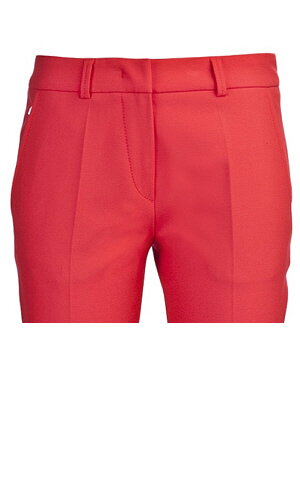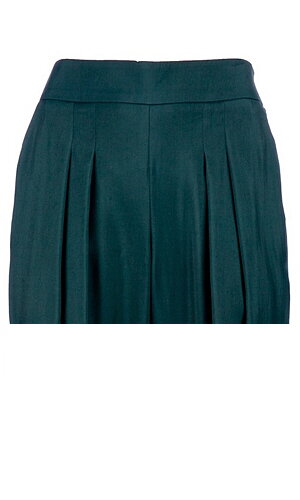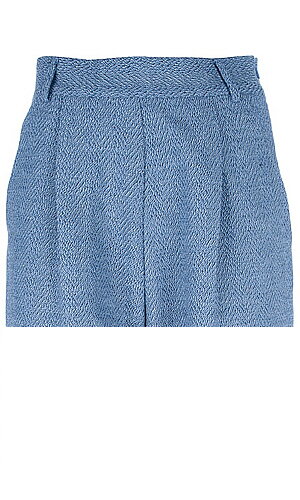Fronts for Sample
- If the waistband of your pants have belt loops and you plan to tuck your top in, you will need a belt to complete the look. Your belt should be half a centimetre narrower than the loops. The correct size of belt will be one that is long enough to do comfortably up on the third hole.- Avoid stretch pants that have more than four percent of a stretch e.g., elastin. The higher percentage of elastic fibre The more likely The fabric will stretch out of shape in high stress areas e.g., The knee. Two to four percent is all that is required for extra movement, a comfortable fit and a flattering appearance.
- Wear your pants slightly long and with a heel to enhance your height. Match your top and bottom to elongate your look.
- For the tallest appearance accompany your pants with high vamp shoes, matching coloured boots or blended hosiery. Wear your pants a little too long and add high heels.
- Trousers and pants with a front crease will visually elongate and slim your legs.
- Pant and trouser styles have been selected that lengthen your legs and visually slim your overall appearance. Avoid high waist styles in favour of classic waistbands and waistbandless styles. These will be more comfortable and will visually elongate your torso. Styles that are slim to medium wide in the width will lengthen and visually slim your body while wide legs styles will make you appear shorter and heavier. To dress up your pants add a shoe with a medium to high heel.
Fronts
It was World War II that made pants an acceptable form of female attire. During the war, women were required to work in factories and adopt jobs formerly performed by men. Therefore, common sense made pants the appropriate attire. However, the first styles of pants worn by women were little more than scaled-down men's trousers. They did little to enhance the female shape and were not very comfortable. Today's pants and trousers cater to the female form and though more flattering than World War II styles, still need careful fit and style consideration to be flattering.
The difference between pants (slacks) and trousers are pleats. Pants have no pleats and are seen to be a little more casual, while trousers are tailored, have pleats and considered dressy. However, pleated pants create bulk around the stomach (especially when seated sitting) and, while comfortable and accommodating, are also enlarging and seen as a little matronly. On the other hand, flat front pants, when well fitted, are comfortable and flattering.
The addition of stretch fibres delivers extra comfort and allows garments to sit closer to the body without tearing the seams. Garments as a result of stretch tend to last longer.
Buy lined pants whenever possible; these diminish the chance of panty lines, extend the life of the pants (and skirts) and fall gracefully over bottoms and full thighs. Pants and trousers in non-stretch woven fabrics should fall vertically to the hemline from your behind.
Pleats either fold forward toward the stomach or outward toward the side seams. Inwards facing pleats are less slimming than those that face outward as they draw attention to the stomach. Pleats while comfortable and accommodating cause bulk on sitting. A well-fitted pair of flat-front pants will be just as comfortable (especially in fabrics with some stretch) and more flattering.
Tailored trousers may or may not have cuffs. Cuffs can visually shorten height and leg length, making them most appropriate for medium to tall women. A zipper may be centre front (fly), in the side seam or the back. Curvy women are best with centre back or centre front zips.
A correct fit is essential to looking good in pants or trousers. Always err on the side of too loose rather than too tight. Fit your largest area (waist, hip, bottom) first and have the other areas altered to fit. Always buy the best quality you can afford and sacrifice quantity for quality if you have a limited budget.
To select your best styles, we have taken into consideration the following factors:
- Your horizontal body type.
- Your vertical body type.
- Your weight.
- Your height.
- Your age.
- Any relevant, prominent features.



